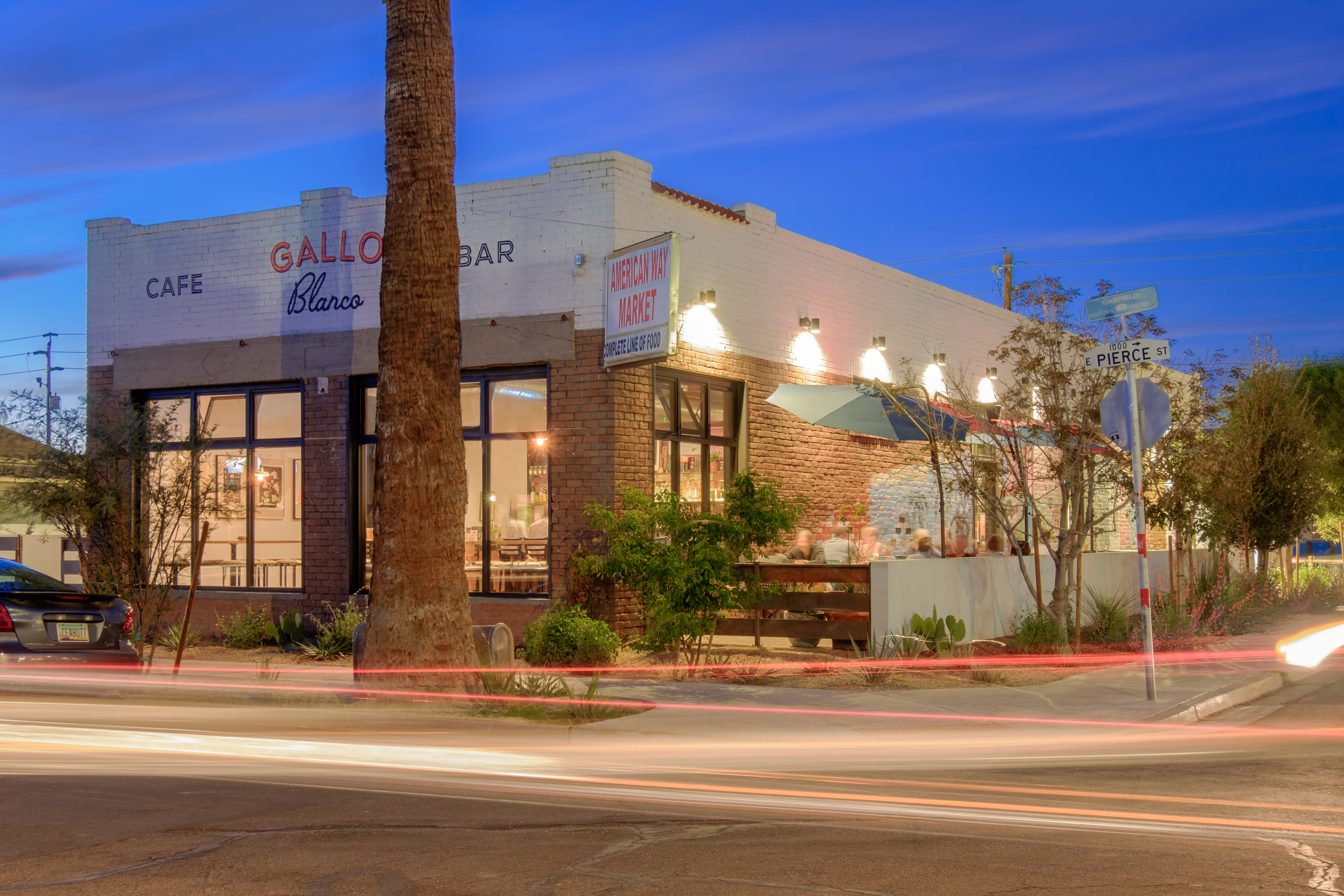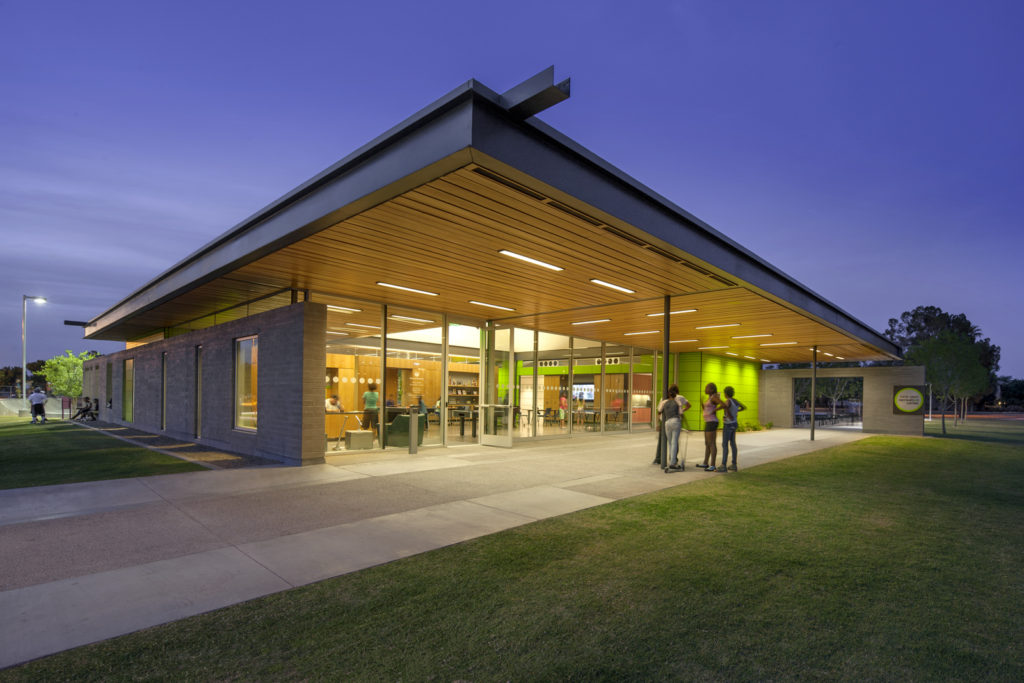Diane Jacobs Through Her Lens

Writer Amanda Christmann
Photography Courtesy of Holly Street Studio
[dropcap]W[/dropcap]ithin the wide boundaries of the Valley are time capsules in plain view. From neighborhoods filled with low-slung houses to communities of stuccoed houses in neutral palettes, each community is a walk through a vastly diverse era in time when worldviews shifted from pre-war simplicity, to mid-century practicality, to the high-tech luxury designs of today.
Among the Valley’s public and commercial buildings are more stories. Take a drive down the Phoenix Central Avenue corridor and you’ll see tired strip centers, brick warehouses and historic buildings among the city’s shiny high rises. Inside each one is a snapshot in time—a look inside the culture and lives of the people who conceived, built and spent their days within their walls.
Phoenix architect Diane Jacobs lives out the concept that architecture both dictates and reflects the context of our lives. As a founding partner at Holly Street Studio, she has provided a fresh and welcome perspective to several of the Valley’s public and commercial spaces.
Innovative projects like Heard Museum West, McCormick Stillman Railroad Park Museum, ASU’s Downtown Student Center, Helen Drake Senior Center, Faye Gray Recreation Center, and Anthem Civic Center are among Holly Street Studio’s achievements. Each one is more than a building; it’s a statement about who we are right now and how we interact.
“Architecture in Arizona is now an opportunity to be in conversation with ourselves about how we can form community and connection, and that’s a good thing,” explains Jacobs.
“Phoenix was founded as a place where people came to escape. A lot of people came here in the 50s and wanted space. Traffic engineers made wide roads that made it easy to zip from one-acre plot to another acre plot.
“Then people came here who really wanted to make Phoenix their home. They realized that this lifestyle of being apart from one another had become toxic and unhealthy. People want to be together, and that’s what we’re seeing now.”
Facilitating those connections is what Jacobs does best. After all, she’s spent her life doing it. Born in New York City, raised in Puerto Rico, educated in Tucson and trained in Boston, she has learned the value of individual stories and multiple points of view.
“I grew up in Puerto Rico to New Yorker parents. As part of having that experience, I feel very comfortable and open and engaged with different cultures.”
Architecture has opened doors for Jacobs, both professionally and personally, including to her husband Michael, who co-founded Holly Street Studio.
“We met in college. I like to say he was one of my TAs because he was,” she says with a grin. “We started dating a few years after that. He was working as an architect in Tucson, and mutual friends brought us together. So far, so good!”
Last month, the couple celebrated 28 years of marriage.
“Something is working out,” says Jacobs. “He’s a wonderful partner. He’s very strong in conceptualizing ideas and solutions. I’m his biggest critic and biggest fan. I think we could both say that.”
Together, they approach architecture in a purposeful manner, using their platform to advocate for the preservation of cultures and history, and to invite people to come together.
Jacobs has an innate, unique perspective on exactly what that means. It’s a view that the local architectural scene is hungry for.
“You bring your whole self to any project,” says Jacobs. “I am a woman and I am Jewish, and I do have certain experiences and understandings and perspectives because of that.
“I did not go to school to become a female Jewish architect. But to neutralize who we are in terms of our nationality and family history, where we live, how we identify ourselves and who we love—if you’re not bringing all of those aspects of yourself, then you’re not fully doing your job.”
While it would be simple enough to focus on the nuts and bolts of building design, for Jacobs, it comes down to personal relationships and understanding the people she is serving.
“I think I have a lot of respect for the average person,” she explains. “I think that a lot of really great ideas come from folks who are living in the situation that you’re trying to remedy or build a project around. I think architects sometimes discount the input of other folks. I’m hyper-empathetic, probably to a fault. I see that as my job.”
Truly listening to each community can be an art form, and is the hallmark of a good architect. Often, it’s not so much about following directions, but in applying years of training, experience and intuition in finding creative solutions to address underlying concerns.
Anthem Civic Center is a good example. The community’s building committee and other residents all had input and ideas about what they wanted to see.
“Just after the building started in Anthem, there was a pretty vocal guy who said, ‘Thank you for listening to everything we said and doing none of it,’” Jacobs says with a laugh.
“The puzzle is in allowing yourself to say yes to the client and figuring it out—not necessarily the way they’re asking, but you have to figure out the result they’re trying to achieve,” she adds.
Faye Gray Recreation Center
Located in South Phoenix, the Faye Gray Recreation Center was one of the most challenging and rewarding projects Jacobs has worked on.
The recreation center is located in Hermoso Park, a 50-year-old recreational area owned by the City of Phoenix that serves a multi-generational, close-knit community. Jacobs and her team had the advantage of working with a passionate neighborhood association to make the center happen.
The center was originally slated only for landscape upgrades, but area residents were thrilled when additional city funding allowed for the construction of a 4,000-square-foot recreation center surrounded by a skate park, restroom buildings, a ramada for parties and gatherings, and play areas for local children.
Today, the award-winning building serves as the heart of the community, hosting after-school meal programs, classes, conferences, leadership councils and teen center activities. Its environmentally friendly design includes abundant natural light, disappearing walls, intimate gathering spaces and inviting, bright colors.
It was also a family affair. Jacobs’ son, who was 13 years old at the time, collected toys as part of a community service project. His contributions remain part of the recreation center.
“It’s now one of my favorite projects,” says Jacobs. “It began as an ugly little building in the middle of a park that the community loved. It also came with a lot of money and time constraints, and we pulled every trick in the book to make 4,000 square feet feel a lot bigger than it is.”
McCormick Stillman Railroad Park Museum
Scottsdale’s McCormick Stillman Railroad Park Museum is a beautiful monument to an important element of Phoenix history, and Jacobs’ design has honored it well. Jacobs and her team showed their creativity in incorporating the historic Peoria Depot and a Pullman car to bring the history of railroads to life.
Taking cues from historic train sheds, Jacobs and her team created an open structure with generous overhangs, abundant natural light and elevated walkways. Inside are 1,500 square feet of model railroads thoughtfully placed to tell the story of the railroad.
Certified as LEED Gold, local and recycled materials were used whenever possible, and it includes photovoltaic solar panels, underground ductwork and an energy recovery system.
The museum does far more than preserve a bygone era; it expands the park’s social purview. Since it opened in 2010, the number of visitors to the park has quadrupled.
Anthem Civic Center
In 2011, Anthem Community Council purchased a former office building near the community’s north entrance with the vision of providing a “living room” for the community. They wanted a space where council meetings and other gatherings could take place, but they also wanted it to feel welcoming and inviting—a departure from the existing maze-like floor plan.
Jacobs and her team created 36,500 square feet of busy, beautifully renovated space which includes a formal community council board room that doubles as a gathering space, multiple meeting rooms, classrooms, a fitness center, a game room and a craft room. It also houses a substation for Maricopa County Sheriff’s Office, as well as offices for Anthem Community Association and HOAs. Among the features are hallmark Holly Street traits, including brightly lit, open spaces and an intentionally designed floor plan that encourages people to come together.
The Future of Holly Street
The world of architecture is often about showing up to the game. With multiple firms submitting bids on each project, wins can be difficult to come by. Recently, however, Holly Street Studio celebrated its biggest win yet. They were selected as lead architects for the new ASU at Mesa City Center. Scheduled to open in winter 2022, the project will house the ASU Creative Futures Laboratory, including academic programs offered by the Herberger Institute for Design and the Arts.
“We’re on it,” said Jacobs. “I know everyone says this, but I really do have the best staff of any firm in town. I have fantastic young architects who are leaders and who bring their whole selves to the projects.”
Though the field of architecture is facing challenges, particularly as people forego educated expertise in exchange for easy-to-access digital solutions, Jacobs still feels hopeful about her own future, and that of young architects emerging into a changing field.
“All of us have a doctor. A lot of people have accountants, physicians, therapists and other people to help live better lives,” she says. “I think a lot of people would benefit from more widespread access to architects. It’s not just a rich people’s profession.”
Architects—and good architecture—will be more important than ever in determining who we are as a culture.
“The need for good architecture in Phoenix is everywhere, particularly in our urban environments,” she says. “Because of our population growth, we are now in this very exciting time that has provided us with the opportunity to talk to each other.
“We’re living closer together than ever before, and more people are interested in walking and not driving. A sense of community is important to the well-being of kids, ourselves and our parents, and a lot of people placing a high value on coming together.
“We have a very strong belief in the idea that design can change lives, not just in short term but in the long term.”



